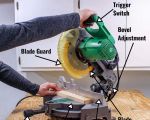How to Use a Torque Wrench Effectively: A Guide for Precision
- 1. What is a Torque Wrench?
- 2. Why Torque Matters in Mechanical Work
- 3. Types of Torque Wrenches and How They Work
- 4. Steps for Using a Torque Wrench Effectively
- 5. Common Mistakes When Using a Torque Wrench
- 6. How to Maintain Your Torque Wrench
1. What is a Torque Wrench?
A torque wrench is a precision tool used to apply a specific amount of torque to a fastener, such as a bolt or nut. It’s an essential tool for ensuring that fasteners are tightened correctly, especially in situations where a precise level of tension is required. For instance, in automotive work, over-tightening or under-tightening bolts can lead to mechanical failure, so using a torque wrench ensures that everything is tightened to the manufacturer’s specifications.
There are several types of torque wrenches, including click-type, beam-type, and electronic torque wrenches. Each has its own advantages, depending on the task at hand, but all torque wrenches serve the same fundamental purpose: they provide the user with the ability to tighten fasteners accurately and consistently.
2. Why Torque Matters in Mechanical Work
Torque is a measure of rotational force, and when it comes to tightening bolts and nuts, precision is everything. If a bolt is tightened too much, it could stretch or snap, while tightening it too little could result in a loose connection that can lead to mechanical failure over time. This is why using the right torque is essential, especially in high-stress applications like automotive repair, machinery, or construction.
For example, I once worked on a car engine, and I over-tightened a critical bolt without using a torque wrench. The result? The bolt became stripped, which caused further damage to the surrounding components. After that experience, I learned just how crucial it is to use a torque wrench and tighten bolts to the specified torque rating to avoid costly mistakes and ensure safety.
3. Types of Torque Wrenches and How They Work
There are several types of torque wrenches, each with its own unique mechanism and features. Below are the most common types:
3.1. Click-Type Torque Wrench
The click-type torque wrench is one of the most popular types and is commonly used by professionals. When the desired torque value is reached, the wrench will emit a clicking sound to alert the user. This feedback ensures that the fastener has been tightened to the correct specification. In my own experience, the click-type wrench provides great accuracy, especially for projects where precision is crucial, like when working on car engines or heavy machinery.
3.2. Beam-Type Torque Wrench
The beam-type torque wrench is a simpler, more basic version. It uses a long, flexible beam that deflects when force is applied, and a pointer on the beam indicates the amount of torque being applied. Although this type of torque wrench is less expensive, it’s less precise than the click-type, but it can still be useful for lighter, less critical work.
3.3. Electronic Torque Wrench
Electronic torque wrenches are the most advanced and provide digital readings of the torque applied. They can be more expensive but are ideal for high-precision tasks and environments where digital monitoring is needed. These wrenches often include memory functions to store previously set torque values and can alert the user when the specified torque is achieved with visual or audible cues.
4. Steps for Using a Torque Wrench Effectively
Using a torque wrench correctly is essential to ensure that you’re applying the right amount of torque. Here’s a step-by-step guide to help you use a torque wrench effectively:
4.1. Set the Correct Torque Value
The first step is to adjust the torque wrench to the correct value. This can be done by rotating the handle or adjusting the settings, depending on the type of torque wrench you have. Always refer to the manufacturer’s manual or your project’s torque specifications to ensure you’re using the right value.
4.2. Attach the Correct Socket
Make sure that you attach the correct socket for the bolt or nut you’re working with. Using the wrong size socket can result in inaccurate torque or even damage the fastener.
4.3. Tighten the Fastener
Once your torque wrench is set up, position it over the fastener and apply a steady force. If you’re using a click-type wrench, pay attention to the clicking sound or feel when the correct torque is reached. Don’t continue tightening after you hear the click, as it indicates that you’ve achieved the desired torque.
4.4. Double-Check Your Work
After applying the torque, it’s always a good idea to check the fastener again. This ensures that you haven’t missed anything and that everything is securely tightened.
5. Common Mistakes When Using a Torque Wrench
Even with the best tools, mistakes can happen. Here are some common errors to avoid when using a torque wrench:
5.1. Failing to Zero Out the Wrench
After each use, it’s important to reset the torque wrench to its lowest setting. Failing to do this can result in the internal spring losing its tension, which can affect the accuracy of the wrench the next time you use it. I’ve learned this the hard way, and now I always make sure to reset the wrench after every use.
5.2. Over-tightening or Under-tightening
Over-tightening or under-tightening can cause issues like stripped threads, cracked bolts, or a loose connection. To prevent this, make sure to stop when you hear the click or see the torque reading. Avoid applying additional force after the wrench indicates that you’ve reached the correct torque value.
5.3. Using the Wrong Size Socket
Using the wrong size socket can lead to inaccurate torque or damage to the fastener. Always use the correct size socket to ensure a secure fit and accurate torque application.
6. How to Maintain Your Torque Wrench
To ensure your torque wrench stays accurate and lasts for years, it’s important to maintain it properly:
6.1. Regular Calibration
Over time, torque wrenches can lose their calibration. Regularly calibrating your torque wrench, either by sending it to a professional or using a calibration tool, will help ensure its continued accuracy.
6.2. Store Properly
When not in use, store your torque wrench in a protective case and avoid dropping it. Proper storage will prevent damage to the wrench and keep it working accurately for longer.
If you’re looking for the best torque wrenches for your needs, I highly recommend checking out ToolNest, where you can find top-quality products and expert recommendations to ensure you’re equipped with the best tools for the job.









